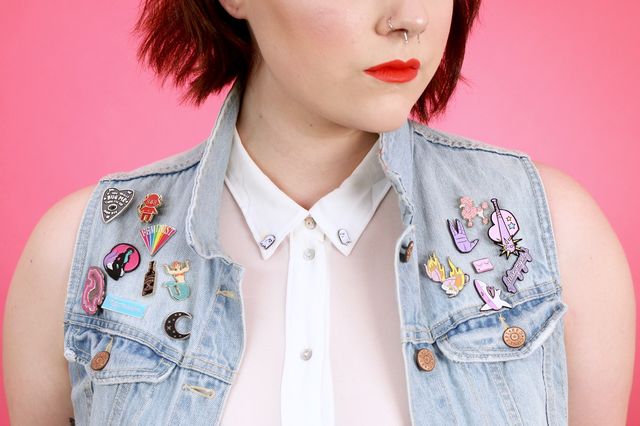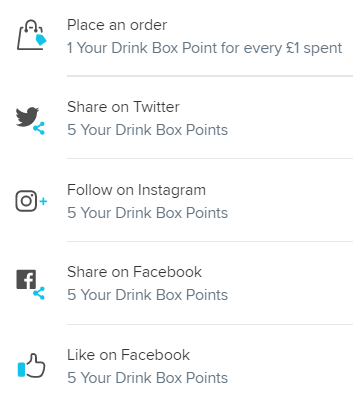These Modern Collectables Will Make You Appreciate ‘Geek Chic’ Charm
Posted by BERNADETTE PAMPLIN

Image: Revelist
Lapel pins are often considered “geek chic” collectables. Recently, several surges in popularity boosted enamel pins into mainstream culture. But where did this begin? How were pins first created and when? Are they really any different from your grandmother’s brooch? Do you know they played a role in militaries and politics? And what lifted them into the mainstream? Well, friend, read on to find your answers!
The History of Enamel Pins in Egypt and China
Lapel pins are made by a process called enamelling. It may surprise you to know enamelling is an age-old process dating back to 1800 BC when Egyptians began the process of inlaying and enamelling. They weren’t making pins at this time, but this is the earliest records of enamelling.
Lapel pins themselves originated around 1271 - 1368 AD in China. It was then the first lapel pins were designed and manufactured with improved techniques. In particular, during the rule of Emperor Zhu Qiyu of the Ming Dynasty, enamelware became extremely popular1.
Lapel Pins vs. Brooches
So what’s the difference between a lapel pin and a brooch? Well, not a lot, physically. They are pretty much the same thing, though they serve different purposes.
Some think lapel pins developed from boutonnieres, the small hole in the lapel of men’s suits once used to hold fresh flowers. The boutonniere (i.e. “buttonhole flower” in English), became popular in the 16th century as a way to repel bad luck. What a pretty way to do it!
|
Lapel Pin
|
Brooch
|
Boutonniere
|
In the 19th century, a number of other objects such as jeweled pins, cigar cases and watch chains joined the boutonniere as a part of everyday dress for men2. Since then, lapel pins have developed a more important sense of identity. While brooches are often worn purely for fashion, lapel pins make a statement.
Militaries Decorate Soldiers with Pins
|
Enamel and lapel pins were worn by soldiers in battle to reflect affiliation or rank, a trend thought to have started during the American Revolutionary War which continued through to World War I and beyond. My father had a fantastic collection of pins from military uniforms, some for lapels and others for berets.
|
From Politics to Religion
Adopted by politicians and supporters during rallies, pins served as a statement of party affiliation. This is not a recent practice, however. During the sixteenth century, Italian men wore a form of brooch called an enseigne, often on hat brims. These were worn to represent successful religious pilgrimages, and sometimes as protection charms after visiting particular shrines.
Businesses Adopt Pins
In recent years, lapel pins became used as symbols of achievement or belonging in different organisations. The corporate world is often littered with them, given out as freebies to employees and customers alike.

Image: Pin Makers
Pop Culture and Collectables
Enamel pins have grown into highly collectable items. Perfect because they are small, so large collections don’t require much room.
There is high demand for pins reflecting popular culture like Disney characters. A quick online search brings up everything and anything in lapel pin form, from Van Gogh to terrariums to positive affirmations to fat avocadoes with happy faces.

Drink-Themed Pins for Spirit Lovers
In very recent years, drinks have become a popular theme in lapel badges. When judging spirits for competitions, I wear my judging jacket with pride, displaying pins given at competitions like IWSC or ADI’s Judging of Craft Spirits. With these I’ve started collecting badges of bottles of gin, like Brighton and Thunderflower. You’ll find a lot of gin companies offering these.
Wearing these--as the expression goes--is ‘wearing a badge of pride’ in the sense that I am championing them. Many colleagues in the spirits world have also become avid collectors of lapel pins and amassed incredible collections.
Love & Victory Pins
Another one in my collection is the Martini pin from ‘Love and Victory’. Love and Victory are a hip, fun brand from Brooklyn, New York who specialise in cocktail-themed gift items. Their pin range features almost every drink you can imagine, from G&Ts to Margaritas to Aperol Spritz. I want them all! In particular, I'm pining for the ‘I Bleed Negroni’ pin, styled like an old school tattoo with a knife piercing the glass.
Cocktail Critters Pins
We’ve recently added the ‘Cocktails Critters’ range of pins, which are absolutely brilliant! This new brand from Hawaii was created by a bartender/graphic designer who wanted to show his love for drinks and pets. The pins pair all your favourite cocktails with cute critters in fantastically quirky designs.
My favourite has to be the Fox and Negroni pin. And I know a friend who will love the Hammerhead Shark Bitter pin, so we all know what she’ll be getting for her birthday! Plus, the Scotch Ness Monster pin is a work of genius! 
All these pins are beautifully made and at a nice round £10 each, it’s time I sorted a few gifts for some friends…as well as adding to my own collection, obviously.
Want to grow your Lapel Pin collection?
Spend more, save more.
|
Get 14 pins for the price of 10. Here’s how:
Plus, spending £100 means you automatically collect 100 points and earn £10 off via our Rewards program. Use your £10 voucher to get your fourth pin free! So, savvy shoppers, build your pin collection or gift pins to friends—the choice is yours!
|
|
How to Earn Reward Points

|
Our Loyalty Rewards program is free to join, simply register here. Simply login to our site every time you make a purchase. Earn 1 point for every £1 spent. Plus, earn more points by interacting with @YourDrinkBox on social media. Earning points is easy. Get £10 off for every 100 points earned. >> Earn Now |
About the Author: Bernadette Pamplin

After landing a job in a gin bar, Bernadette became obsessed with gin and sought extensive training to learn all she could about the juniper spirit. Later, she merged her passion for gin and her passion for words becoming a drinks writer. She now pens articles for publications like Gin Magazine, content for Your Drink Box and her own blog, Under The Ginfluence.
She has also served as Brand Ambassador for a large UK Gin Festival and helps organise the Craft Distilling Expo as well as speaking on its panels.
Bernadette has four years experience judging events like Gin of the Year, World Gin Awards, Spirits Business Awards, American Distilling Institute Judging of Craft Spirits, IWSC, and Gin Guide Awards. She loves trying gins, learning to distinguish flavours and how the botanicals and distillation processes create the final result. Very much "under the ginfluence," Bernadette is driven by the spirit's history, flavour and story. While gin is her speciality, she has affection for all spirits.
References
1. https://oldenglishprints.com/pages/history-of-enamel-pins
2. https://www.thestudio.com/blog/six-things-you-didnt-know-about-the-history-of-lapel-pins


 Image: Sotheby's
Image: Sotheby's Image: LiveAbout
Image: LiveAbout Image: Image: GS-JJ.com
Image: Image: GS-JJ.com

Cre8iveSkill On
This is a very insightful and comprehensive blog post. The article’s exploration of the history and evolution of enamel pins and their significance in self-expression and community building resonated deeply with our passion for embroidery. Cre8iveSkill, as one of the leading vendors in commercial embroidery, applauds the author’s ability to capture the essence of how these small yet powerful embellishments can transform clothing and accessories into personalized statements of style and individuality.